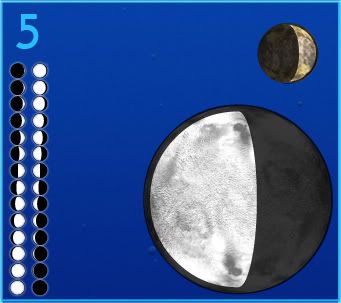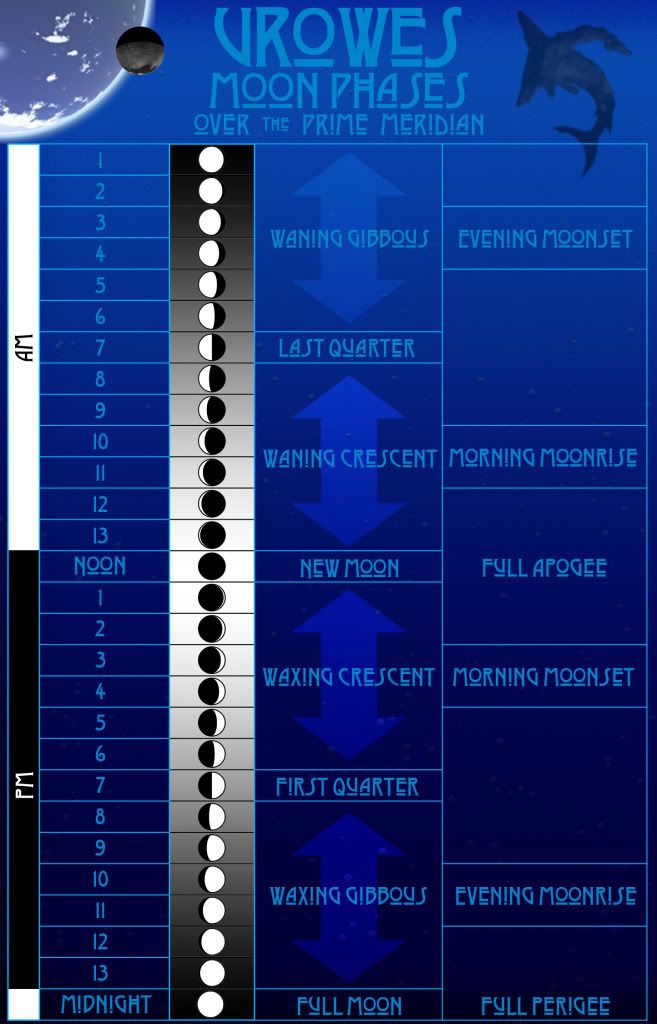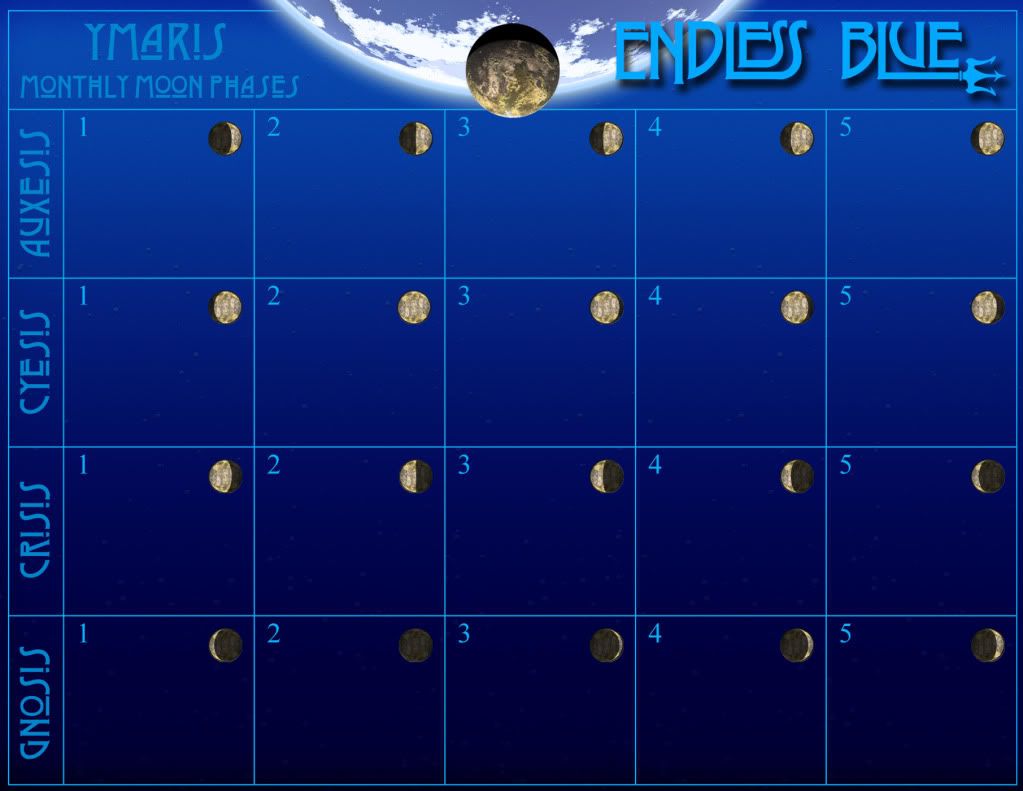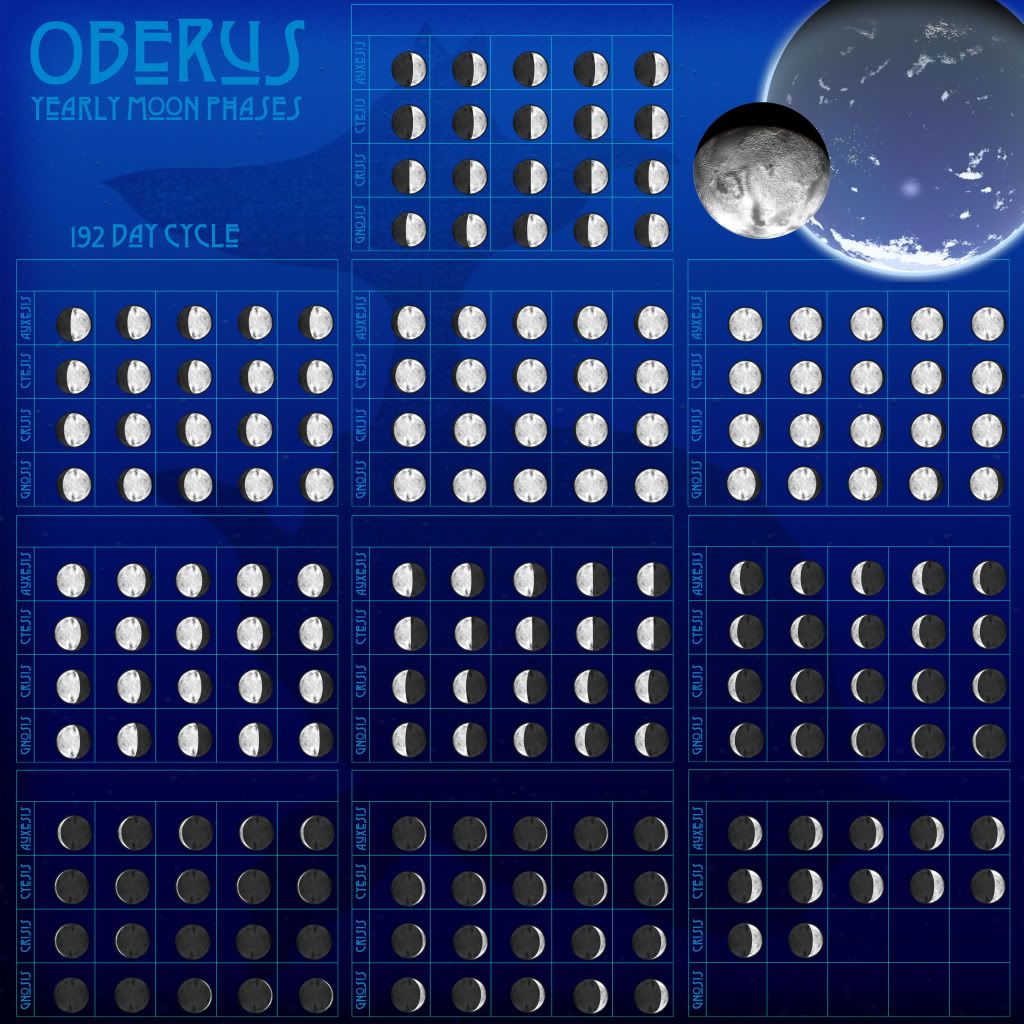Economy
Currency of the CurrentsAs groups of pisceans congregated together in the waters of the Known World and developed settlements, they began to exploit the local natural resources to produce products for their personal consumption. As these ancestral artisans became more adroit at their skills they became more prolific, and as a result they began to produce a surplus. This surplus would normally go to waste if it were not for the needs of the others in their settlement for that piscean's production. A farmer that farms enough to feed his family can survive, but a farmer that farms excess can supply for others, freeing those other workers to concentrate on developing other skills.
Expecting an equitable, if not profitable compensation for their toil, the farmers would expect those that benefited from his work to provide something the farmers were unable to produce. This was trade, and as the settlements grew larger, the cultures more diverse, and the production more widespread, trade grew from one-on-one bartering into a complex system of debts and credits. The complexity of the ancient piscean trades would eventually become too complex for simple exchange between two individuals. If a farmer had ricelqua for sale, and the local culinist had kelugen for sale, a trade could only successfully complete if both participants needed the product the other was offering. If the kelugen needed to eat, but the farmer had no use for kelugen, the trade was not likely to proceed without the intervention of a third part with a product of their own, or the farmer could make the trade in the hopes that later he would find someone willing to take the kelugen that hopefully would not have spoiled by then. However, if there was some commonly agreed upon method of exchange that would be accepted by not just the traders involved, but any trader the two might come across, then the likely-hood of a successful exchange improves.
This method of exchange began with promissory oaths of repayment, where the two individuals agree that the piscean whom could not produce desired goods at the moment would provide something acceptable at a later time. As trading methods matured, these oaths became physical in the form of written agreement. These eventually became tokens which a craftsman would give individuals that he would honor later when presented to him. This was a system of commodity money, where the tokens would become associated with the product promised: a ricelqua token for a bushel of ricelqua, for example.
Individuals emerged that made their livelihood not by producing like standard workers, but by trading goods that they received from others. These mercantile individuals made their living by trading the products of others, each time with a little bit more benefit to himself. Usually this required dealing with individuals separated by distance, with little chance to ever meet each other and thus no opportunity to take advantage of commodity tokens. Again, a need presented itself for a more abstract representation of products and/or services that would be accepted without individual parties to agree to the terms.
Merchants provided the answer in the form of representative money. These tokens did not represent actual products, but an set amount of value that would be accepted by others because of the confidence held that the merchant that issued them would make good on them. These are the first coins, and with their introduction in the Fluid Nations began an explosion of economic growth.
But what form would these coins take? The coins needed to be difficult to duplicate, else the unscrupulous could counterfeit them and lessen their worth. That meant common naturally grown materials that are easily replenished, like bone, hide, or coral, were unusable. With a rarer material, the worth of the coin would be bolstered by the value of the substance of which it was comprised. The problem with this approach was that many times a precious material would become costly than the value of the coinage, and results in individuals scavenging the material for its raw value.
Metals that do not corrode were needed. Unable to use the primal elements like iron, the traders of ancient Elqua used materials like gold and silver that did not slowly decompose in saltwater. These precious metals are catalysts, reagents that influence chemical reactions without themselves being consumed in the process. Instead these materials tarnish, accumulating a layer of discoloration over the metal without compromising the purity of said metal. This tarnish is the result of the same process that rusts metal, and it protects the inner layers of metal from the ravaging effects of seawater.
Smelting without Fire
The constant retardant to the progress of civilization is the very same thing that gave rise to it -- ever present blanket of water that enshrouds the world. Surrounded by water on all sides, fire cannot exist in an easily utilized form. Without fire, the can be no smelting of metal from ores, no mixing of metals into alloys (hence no bronze unguis and nautiluses).
This led to the rise of the alchemists, those curious pisceans that learned the secrets of chemicals and the component elements of the things around them. The secrets of hydro-metallurgy were theirs to command, and like magic they could draw precious metals from common materials like stone or the water around them. Their promises of achieving the philosopher's stone were relatively, if not actually, achievable.
This long and difficult process of extracting metal from ores without heat is called leaching, and it uses aqueous solutions based on toxic cyanide slowly dilute the metal throughout the solution, which is in turn processed alchemically to concentrate the trace element. This portion of the process is repeated over and over until it reaches the consistency of slurry. At this point pressure can be used to squeeze out the excess liquids, leaving an amount of relatively pure precious metal.
The produced metal was then shaped through more physically demanding methods that a craftsman would understand, with cutting the metal into shape, carving markings onto its faces, and eventually the process of pressing metal, called striking, into coins as we do today.
Eventually the coin as we understand it was invented, a piece of hard material that came to symbolize the trading process. To be effective, these coins needed to be the same shape, size, and weight in order to be adopted as a standard unit representing trade. To be accepted ubiquitously, one coin had to be equal to any other of its type, and to accomplish that required the backing of local government establishing laws that made the coinage "legal tender".
Coins of the Known World
Silver is the basis of currency in the Known World, and numerations of this value are the most commonly found amongst the populace. Gold does exists, is known well and is quite desired, but most pisceans do not encounter it in normal day-to-day activities. Only in cases of major purchases, dowries, or inheritance would multiple gold coins not draw unusual attention. That does not mean, however, that prices are expressed in terms of silver any more than we would cite a one hundred dollar price tag in terms of all pennies. Platinum is not used as a coinage material by Elquans. Though its existence is known, the hydro-metallurgical process required to leech the metal from ore is exorbitantly expensive and produces such substandard results that it has been relegated to gilding and other foil effects on works of art.
The Coins:
The Mer were the first race to adopt coinage that had more worth than the material from which it was comprised. After the subterfuge that tore apart the last Fluid Nations Accord, the Mer currents devised a system of keeping their internal economy separate from that of the global trade between bodies of water in the Known World.
The main internal coin of the Merfolk is carved from a specially bred strain of coral that the governments of the Mer Currents keep jointly, hidden away from the populace. When carved into coins and polished to a smooth finish, it has a deep hue of red and a luster unsurpassed by any material except for pearl. Each current is charged with keeping a cache of precious metals and/or gemstones to back up the value of each coin issued in their body of water. These coins are meant for domestic use only, and are not to be exported outside the body of water's borders under punishment of law. As a precaution, the coinage is never accepted by Mer or exchanged for local currency while abroad.
Noble -- 1 copper
Sovereign -- 1 silver
Crown -- 1 gold
Sovereign -- 1 silver
Crown -- 1 gold
The noble is a tiny disc, almost a chip, that is thicker at the middle than along the edges. As a result, nobles are difficult to stack (a children's game has grown around the very activity). Sovereigns are thin rods whose diameter is significantly smaller than that of the noble, and the crown is a solid rectangular strip that is wider than the sovereign but thinner. The shapes of the coinage are cleverly chosen so that the higher denominations cannot be re-carved into more nobles than the original coin equaled. The sovereign's diameter is less than that of the noble, just as the crown's thickness. The government of the Mer Currents takes great lengths to ensure that each current's currency is equal to the all the others, and currently those same currents are furiously debating and debasing the economic validity of their neighbor's financial activities.
When indulging in trade with foreign nations, the Mer have a special set of coins, called lucrum, whose worth is based on the metallic content of each denomination. Each of these coins is scored at every 45 degrees around the center of the coin. These indentations make it easier to snap the coin into parts, giving the coins a flexibility to take into account times when the value of the metal material rose or fell. This trade coinage has been quite successful, and is eagerly accepted in most any of the Fluid Nations. Each coin is comprised of a troy ounce of its respective metal:
Cuprei (pl. cupreium) -- approx. 8 cp
Argei (pl. argeium) -- approx. 8 sp
Aurei (pl. aureium) -- approx. 8 gp
Argei (pl. argeium) -- approx. 8 sp
Aurei (pl. aureium) -- approx. 8 gp
Chelon coinage is tied heavily to their ruling party, and in many ways assists in understanding the races' calendar. Coinage is minted yearly, with the reigning sovereign on the obverse and some symbology on the reverse commemoration some event or decision made. As the year goes by, the populace is encouraged to turn in their old coinage in exchange for the new ones, and at this time a portion is kept by the government as a form of paying taxes. 1 rand = 20 gelding = 240 dram, which makes a gelding equal to 12 dram.
Half-dram -- 1 copper
One dram -- 2 copper
Two dram -- 4 copper
Four dram -- 8 copper
Eight dram -- 1 silver, 6 copper
One gelding -- 2 silver, 4 copper
Four gelding -- 9 silver, 6 copper
Eight gelding -- 19 silver, 2 copper
One rand -- 2 gold, 8 silver
Two rand - 5 gold, 6 silver
One dram -- 2 copper
Two dram -- 4 copper
Four dram -- 8 copper
Eight dram -- 1 silver, 6 copper
One gelding -- 2 silver, 4 copper
Four gelding -- 9 silver, 6 copper
Eight gelding -- 19 silver, 2 copper
One rand -- 2 gold, 8 silver
Two rand - 5 gold, 6 silver
Lumulus, with their access to thermal vents, can actually smelt ores, and as a result have the finest, purest coinage. Their coins are complex, with ornate, finely detailed faces, geometric polygon shapes, and comprised of multiple metals that seem to be seamlessly fitted together instead of alloyed. The true beauty of these pieces, however, is the small inlay of quartz glass that is masterfully embedded through the coin and incorporated into the design. Similar to the Mer, Lumulan coins are meant for internal purposes only, but in this races' case it is due more for sociological reluctance than for economic stability, though there is practically no worry about counterfieting these coins, as no other nation has the level of technology needed to accomplish the task.
Pa'Anga'tha -- 1 silver
Tlo'Onga'tha -- 1 gold
Tze'Enga'tha -- 10 gold
Tlo'Onga'tha -- 1 gold
Tze'Enga'tha -- 10 gold
Orcan coinage is both functional and ornamental. Each coin has a square hole pierced through its center, where a string of treated leather or ligament can be threaded through to form a necklace, bracelet, or other form of jewelery. These coins are called dirhem, and transactions in dirhem are renown for the excess number of coins required to complete the sale.
1 dirhem -- 1/4th a copper
4 dirhem -- 1 copper
8 dirhem -- 2 copper
32 dirhem -- 8 copper
48 dirhem -- 1 silver, 2 copper
96 dirhem -- 2 silver, 4 copper
4 dirhem -- 1 copper
8 dirhem -- 2 copper
32 dirhem -- 8 copper
48 dirhem -- 1 silver, 2 copper
96 dirhem -- 2 silver, 4 copper
Narrow minded sages of the civilized races cite that the primitive races mostly stay with the barter system, save the Yaun-Teel whom have amassed a significant collection of money from the various other civilized races due to their shrewd trading practices. If the Yaun-Teel are said to have any currency to call their own, it would be in the form of the collars around their slaves' necks. Not an exact amount, the torc is an abstract gauge of worth.
Truth be told, all of the races of the Known World posses some kind of "coinage", but perhaps not in the most traditional sense. The Locanth keep a series of leather strips tied together and woven into a personally recognizable patternas a form of "debt" for services rendered to them, and when the original party has been repaid, the strip is returned. These redeemed strips become prized mementos, tangible proof of a young warrior's dedication and trustworthiness to fulfill his debts. A recent trend has begun of trading these debt strips to third parties, who themselves can either collect on the debt or trade off to yet another merchant, making the langeneli the first banknote of the Known World.
Langeneli -- set at time of transfer.
The bulbous eyed Kouton are enamored with translucent gemstones, and use many of these -- cut into distinctly unique but standardized shapes -- as their money. Clear quartz is their most common gem-coin, with higher denominations made of naturally tinted quartzes like amethyst, citrine, and vermarine. Referred to as talents, they are
Gloss Talent -- 4 copper
Purpure Talent -- 4 silver
Or Talent -- 4 gold
Vert Talent -- 16 gold
Purpure Talent -- 4 silver
Or Talent -- 4 gold
Vert Talent -- 16 gold
The state of inflation in the Bay of Kouton is very dear, with an increase in prices up to five times that of other nations. This is due to the natural hoarding instinct of the race, and haggling in any transaction is to be expected to lessen the cost of doing business with each other.
Talents are difficult to make consistently identical, so every Kouton is well versed in the appraisal skill when exchanging these gemstones. Make opposed Appraise skill checks when dealing in Kouton talents, with the winner getting the difference in rolls as essentially a percentage discount, representing the loser's error in assessing the gemstones.
The Ceph, with not true homesea of their own and thus no government to issue currency, eek out their lives underfoot of the other races. In the rare instance they can manage to scrape together any money, it will be of whatever coinage the nationality they live in utilizes.Remember, even though the in-game method of counting is in base-8, you can simply keep track of character wealth in the familiar base-10 system we are all accustomed with, so long as you are consistent about it. The moment you begin converting for a single transaction, an imbalance will occur.
The Price of Doing Business
Most money exchangers will keep a nominal portion of the amount of coinage given to for conversion into other coinage as a fee. After all, they are providing a service, and need to be able to make a profit to feed and clothe themselves. This percentage can be small to significant depending on what currency is exchanged where, and calculated in 5% incremental steps. The percentage is up to the game master to determine, with a few guidelines:
- The civilized races treat the money of the primitive races as second-rate economies, and will impose greater fees to lessen the risk of dealing with "volatile funds".
- Distant nations that don't have as much contact as neighboring bodies of water will have a harder time changing their money due to the fact that there are fewer instances that foreign cash can be used.
- Antagonistic races will a larger fee for coinage from their adversary.
The reduction in funds due to exchange rates is the price of doing business in a foreign market, but should not be viewed as punitive to the players. Only in the rarest circumstances should exchange rates ever exceed 25%.










